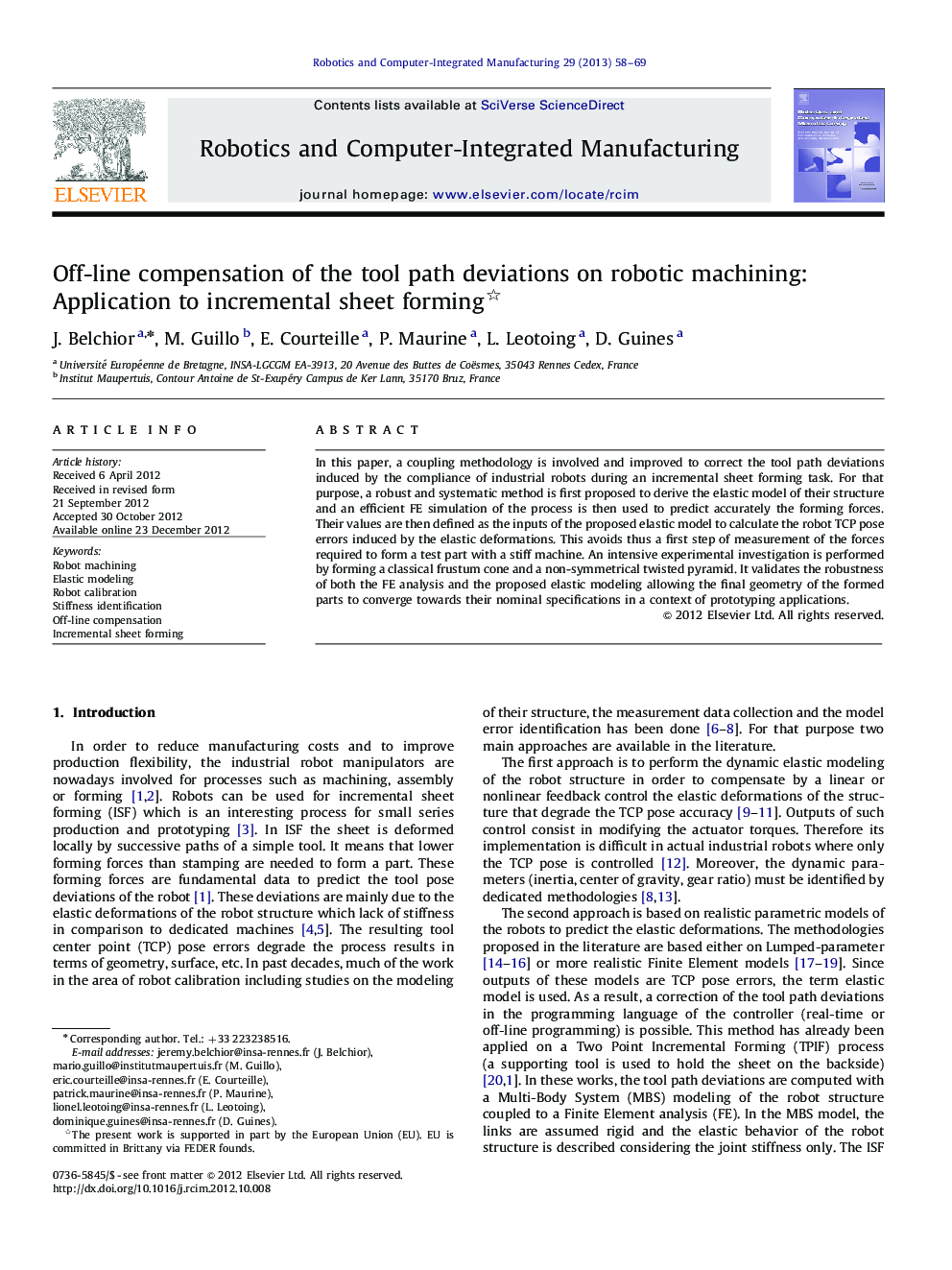| Article ID | Journal | Published Year | Pages | File Type |
|---|---|---|---|---|
| 413991 | Robotics and Computer-Integrated Manufacturing | 2013 | 12 Pages |
In this paper, a coupling methodology is involved and improved to correct the tool path deviations induced by the compliance of industrial robots during an incremental sheet forming task. For that purpose, a robust and systematic method is first proposed to derive the elastic model of their structure and an efficient FE simulation of the process is then used to predict accurately the forming forces. Their values are then defined as the inputs of the proposed elastic model to calculate the robot TCP pose errors induced by the elastic deformations. This avoids thus a first step of measurement of the forces required to form a test part with a stiff machine. An intensive experimental investigation is performed by forming a classical frustum cone and a non-symmetrical twisted pyramid. It validates the robustness of both the FE analysis and the proposed elastic modeling allowing the final geometry of the formed parts to converge towards their nominal specifications in a context of prototyping applications.
► A method is proposed to correct the tool path deviations of robots used for incremental sheet forming. ► It involves a systematic elastic calibration of robots and FE simulations of the process. ► Experiments validate the robustness of the proposed method.
